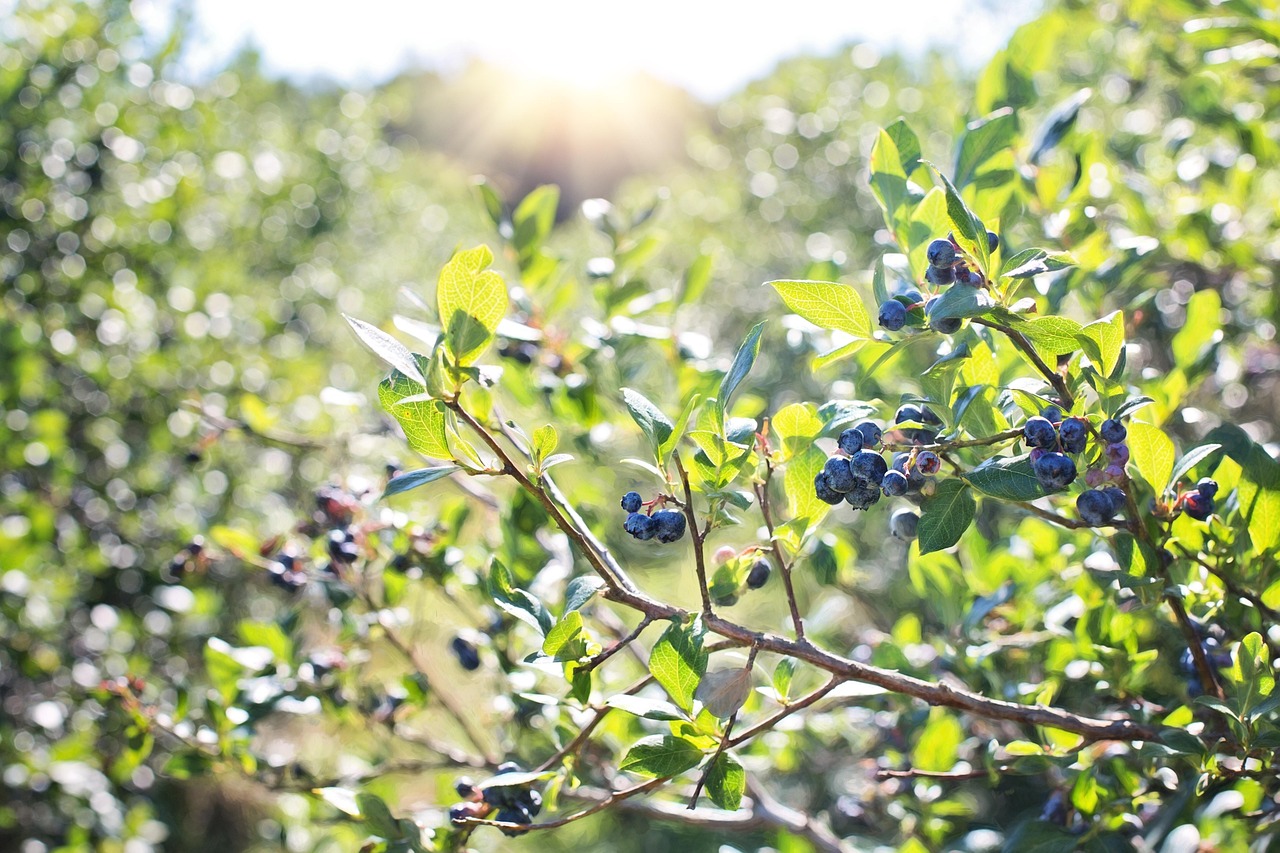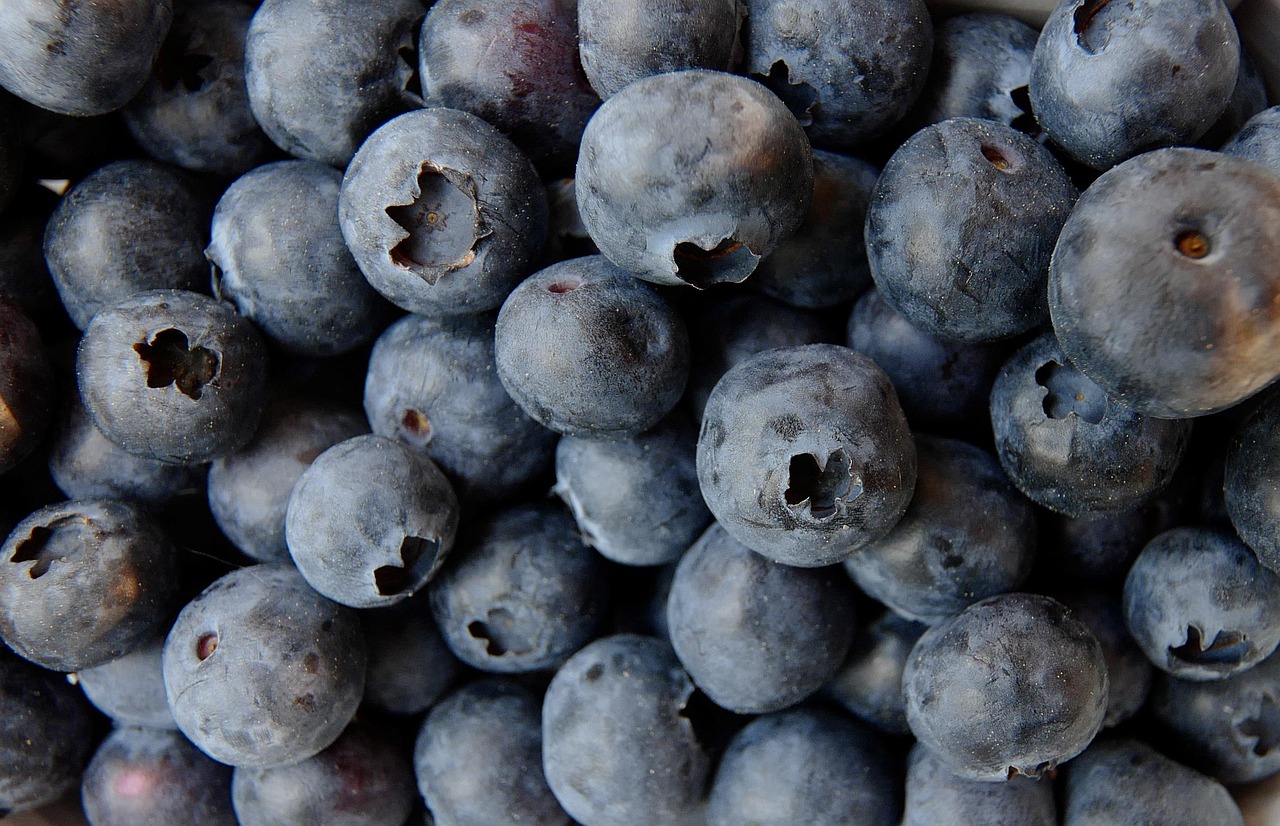Pruning blueberry bushes for winter preparation is essential for maintaining healthy plants. Proper pruning encourages vigorous growth, increases fruit yield, and helps prevent disease. The best time to prune is late winter or early spring when the plants are still dormant.
Blueberries are popular among gardeners due to their delicious fruit and health benefits. They are easy to grow, but they require specific care to thrive. One of the most important tasks in blueberry bush maintenance is pruning. This process not only shapes the bush but also enhances fruit production and improves air circulation within the plant. Understanding the right techniques and timing can lead to a bountiful harvest.

Why Prune Blueberry Bushes?
Pruning blueberry bushes serves several critical purposes. Here are some key reasons why this practice is beneficial:
- Promotes Healthy Growth: Pruning encourages new growth. This is particularly important for blueberries, which produce fruit on one- to two-year-old wood.
- Increases Fruit Production: Removing old or weak branches allows more sunlight to reach the inner parts of the bush. This can lead to larger and more abundant fruit.
- Improves Air Circulation: Proper pruning helps maintain good air circulation around the plant. This reduces the risk of fungal diseases.
- Shapes the Bush: Regular pruning helps maintain a manageable size and shape, making harvesting easier.
Understanding the different types of blueberry bushes is also important. There are three main categories: highbush, lowbush, and rabbiteye. Each type may require different pruning techniques and timing. Below is a brief comparison of these types:
| Type | Height | Fruit Size | Pruning Needs |
|---|---|---|---|
| Highbush | 4-6 feet | Large | Annual pruning recommended |
| Lowbush | 1-2 feet | Medium | Pruned every few years |
| Rabbiteye | 6-12 feet | Medium to large | Annual pruning recommended |
When to Prune Blueberry Bushes
The timing of pruning is crucial for the health of blueberry bushes. Pruning should be done when the plants are dormant, typically in late winter or early spring. This timing minimizes stress on the plants and allows them to heal quickly as they begin to grow again. Here are some tips on timing your pruning:

- Wait until all the leaves have fallen off.
- Avoid pruning during frost, as this can damage new growth.
- Check local weather patterns; it’s best to prune just before the plants begin to bud.
How to Prune Blueberry Bushes
Pruning techniques may vary depending on the type of blueberry bush you have. However, there are some general steps that apply to all types:
- Assess the Bush: Before you start, take a look at the overall shape and health of the bush. Identify any dead, diseased, or damaged branches.
- Remove Old Wood: Focus on removing older branches that are more than three years old. These branches generally produce less fruit.
- Select Strong Canes: Keep younger, healthy canes that show good growth. Aim for a balance of old and new wood.
- Cull Weak Growth: Thin out weak or spindly growth to improve airflow and light penetration.
- Trim for Shape: Finally, shape the bush to encourage an open structure, making sure it is wider at the base than at the top.
Using sharp, clean pruning shears is critical for effective cutting. Clean cuts heal faster and reduce the risk of infection. Additionally, disinfect your tools between cuts if you notice any disease signs on your plants.
By properly pruning your blueberry bushes during winter prep, you set the stage for a healthy growing season ahead. With attention to detail and care, you can ensure that your plants will thrive and produce an abundant harvest in the coming months.

Tools Needed for Pruning Blueberry Bushes
Having the right tools is essential for effective pruning. Using proper equipment not only makes the job easier but also helps ensure that you make clean cuts. Below is a list of tools you may need for pruning blueberry bushes:
- Pruning Shears: A pair of sharp hand shears is essential for cutting small branches. Look for ergonomic designs for comfort during extended use.
- Loppers: For thicker branches, loppers are a great choice. They provide extra leverage and can handle branches up to 1 inch in diameter.
- Hand Saw: A small hand saw can be useful for cutting larger branches that cannot be handled with shears or loppers.
- Gloves: Gardening gloves protect your hands from thorns and cuts while pruning.
- Disinfectant: Use a disinfectant solution to clean your tools between cuts. This helps prevent the spread of diseases.
Understanding the Growth Habits of Blueberries
To prune effectively, it is important to understand how blueberry plants grow. Blueberries grow in a specific pattern that can influence your pruning decisions. Here are some key growth habits to keep in mind:
- Fruit Production: Blueberries produce fruit on one- to two-year-old wood. Removing older wood encourages the growth of younger, more productive branches.
- Canopy Structure: Blueberry bushes can become dense over time. An open canopy promotes better light penetration and airflow, which are vital for fruit development.
- Dormant Period: Blueberry plants enter a dormant phase in winter. During this time, they conserve energy and prepare for new growth in spring.
Common Mistakes to Avoid When Pruning
Pruning can be a straightforward task, but there are common mistakes that many gardeners make. Avoiding these pitfalls will help ensure the health of your blueberry bushes:

- Pruning Too Late: If you wait too long into spring, you may cut off new growth that would have produced fruit.
- Over-Pruning: Removing too many branches can stress the plant and reduce fruit yield. Aim for moderate pruning to maintain balance.
- Ineffective Cuts: Making jagged cuts can lead to injury and disease. Always use sharp tools and make clean cuts.
- Ignoring Dead or Diseased Wood: Failing to remove dead or diseased branches can compromise the health of the entire plant.
Post-Pruning Care for Blueberry Bushes
After pruning, your blueberry bushes will need some extra care to recover and thrive. Here are some steps to follow:
- Watering: Ensure the bushes receive adequate water, especially if you experience dry weather after pruning.
- Mulching: Apply a layer of organic mulch around the base of the bush. This helps retain moisture and suppress weeds.
- Fertilizing: Consider applying a balanced fertilizer in early spring to support new growth. Follow guidelines specific to blueberries for best results.
- Pest Monitoring: Keep an eye out for pests or diseases after pruning. Early detection can help prevent larger problems later on.
Pest and Disease Management in Blueberry Bushes
Pest and disease management is crucial for maintaining healthy blueberry plants. Some common issues include:
| Pest/Disease | Description | Treatment Options |
|---|---|---|
| Blueberry Maggot | A fly that lays eggs in the berries, causing them to rot. | Use insect traps and consider organic pesticides. |
| Powdery Mildew | A fungal disease that appears as a white powder on leaves. | Improve air circulation and apply fungicides as needed. |
| Cankers | Diseases that cause dead areas on stems and branches. | Prune affected areas and apply appropriate fungicides. |
By being aware of these potential threats, you can take proactive steps to protect your blueberry bushes throughout the growing season. Regular monitoring is key to catching issues early and ensuring the health of your plants.
Understanding Blueberry Varieties and Their Pruning Needs
Different varieties of blueberries have unique characteristics and requirements for care and pruning. Recognizing these differences can help you effectively manage your blueberry bushes. Here are the primary types:
- Highbush Blueberries: These are the most commonly grown variety in North America. They thrive in well-drained, acidic soils and require annual pruning to maintain their shape and promote fruit production.
- Lowbush Blueberries: Typically found in wild environments, these bushes are smaller and spread through runners. They require less frequent pruning but benefit from regular maintenance to encourage healthy growth.
- Rabbiteye Blueberries: Native to the southeastern United States, these varieties are more tolerant of heat and drought. They need annual pruning to manage their size and improve fruit yield.
Pruning Techniques for Different Blueberry Varieties
Each variety has specific pruning techniques that can optimize growth and yield. Below are tailored approaches for each type:
Highbush Blueberries
For highbush blueberries, follow these steps during the pruning process:
- Remove Dead or Diseased Wood: Start by cutting out any dead or diseased branches, which can hinder the overall health of the bush.
- Thin Out Older Canes: Focus on removing older canes that are more than three years old. Aim to keep a mix of younger canes for optimal fruiting.
- Maintain Height: Trim back canes to about 3-4 feet to maintain a manageable height for harvesting.
Lowbush Blueberries
Lowbush blueberries require a different approach:
- Encourage New Growth: Prune once every few years to stimulate new growth. This can be done by cutting back old wood to ground level.
- Manage Spacing: Ensure that plants are spaced properly to allow for air circulation, which helps prevent diseases.
Rabbiteye Blueberries
For rabbiteye blueberries, consider the following:
- Annual Pruning: Conduct annual pruning to remove weak or crowded canes. This helps improve airflow and light exposure.
- Aim for an Open Canopy: Shape the bush to remain wider at the base than at the top, allowing sunlight to penetrate the bush.
The Role of Soil and Fertility in Pruning Success
The health of your blueberry bushes is closely linked to soil quality and fertility. Blueberries thrive in acidic soils with a pH between 4.5 and 5.5. Proper soil management can enhance the benefits of pruning:
- Soil Testing: Regularly test your soil pH and nutrient levels. This helps determine if amendments are needed.
- Organic Matter: Incorporate organic matter such as compost or peat moss to improve soil texture and fertility.
- Fertilization: Use a balanced fertilizer designed for acid-loving plants in early spring. Follow application rates based on soil test results.
Irrigation and Watering Practices
Irrigation is vital for healthy blueberry bushes, especially after pruning. Blueberries require consistent moisture but do not tolerate waterlogged conditions. Here are tips for effective watering:
- Adequate Watering: Ensure that bushes receive about 1-2 inches of water per week, especially during dry spells.
- Avoid Overhead Watering: Use drip irrigation or soaker hoses to minimize leaf wetness, which can reduce the risk of fungal diseases.
- Mulching: Apply mulch around the base of the bush to retain moisture, suppress weeds, and regulate soil temperature.
Seasonal Considerations for Blueberry Bushes
Your blueberry bushes will have different needs throughout the year. Understanding the seasonal changes can help you provide appropriate care:
| Season | Main Activities | Caring Tips |
|---|---|---|
| Winter | Pruning, Soil Preparation | Ensure proper mulch cover to protect roots from freezing temperatures. |
| Spring | Fertilization, Pest Monitoring | Apply fertilizer as new growth begins and monitor for pests. |
| Summer | Irrigation, Harvesting | Water regularly; harvest berries when ripe. |
| Fall | Pest Control, Mulching | Add mulch as needed and prepare plants for winter dormancy. |
Each season brings specific challenges and opportunities for your blueberry bushes. By staying attuned to their needs, you can ensure they remain healthy and productive throughout the year.
Additional Tips for Successful Blueberry Bush Care
In addition to the previously discussed aspects of pruning, soil management, and seasonal care, there are further considerations that can enhance the health and productivity of your blueberry bushes. Here are some additional tips for successful blueberry bush care:
- Companion Planting: Consider planting beneficial companion plants alongside your blueberries. Herbs such as basil and mint can deter pests, while flowers like marigolds can attract pollinators.
- Regular Monitoring: Keep a close watch on your bushes throughout the growing season. Look for signs of nutrient deficiencies, pests, or diseases early to address them promptly.
- Proper Spacing: Ensure that your blueberry bushes are spaced adequately apart to allow for air circulation and sunlight penetration. This reduces competition for resources and helps prevent disease.
- Use of Organic Practices: Whenever possible, opt for organic fertilizers and pest control methods. This not only benefits your plants but also promotes a healthier ecosystem in your garden.
- Record Keeping: Maintain a journal of your blueberry bush care. Note pruning dates, harvest times, and any pest issues. This information can help you refine your care practices over the years.
Understanding Blueberry Nutrition
Blueberries are not only delicious but also packed with nutrients. Understanding their nutritional needs can help you foster healthy plants that yield nutritious fruit. Key nutrients for blueberry bushes include:
- Nitrogen: Essential for leaf growth, nitrogen promotes healthy foliage. However, too much nitrogen can lead to excessive leaf production at the expense of fruit.
- Phosphorus: Important for root development and flower production, phosphorus supports fruiting in blueberry bushes.
- Potassium: This nutrient helps improve overall plant health and enhances fruit quality.
- Iron: Blueberries often require supplemental iron due to their preference for acidic soils. Iron is vital for chlorophyll production and healthy leaves.
Strategies for Dealing with Common Pests and Diseases
If you encounter pest or disease issues despite your best efforts, there are several integrated pest management strategies you can employ:
- Natural Predators: Encourage natural predators such as ladybugs and lacewings to your garden. These insects feed on common pests like aphids.
- Crop Rotation: If you have multiple plantings, practice crop rotation to disrupt pest life cycles.
- Neem Oil: Consider using neem oil as a natural pesticide. It is effective against many pests and is safe for beneficial insects when applied properly.
- Soil Health: Keep your soil healthy through regular amendments and composting. Healthy soil leads to stronger plants that are better able to resist pests and diseases.
Final Thoughts
Caring for blueberry bushes is a rewarding endeavor that combines knowledge, skill, and patience. By understanding the specific needs of your plants regarding pruning, soil management, watering, and seasonal care, you can promote robust growth and maximize fruit production. Remember that each variety of blueberry may have unique characteristics that influence how you care for them.
The journey of growing blueberries is filled with learning opportunities. From selecting the right varieties to mastering pruning techniques, every step contributes to the overall success of your garden. Regular monitoring and proactive management will ensure that any issues are addressed before they escalate.
As you prepare for winter by pruning your blueberry bushes, remember that this careful preparation sets the stage for a fruitful season ahead. With attention to detail and a commitment to best practices, you can enjoy bountiful harvests of delicious blueberries year after year.
Your investment in knowledge and care will not only enhance your gardening skills but will also lead to healthier plants and more flavorful fruits. Happy gardening!
